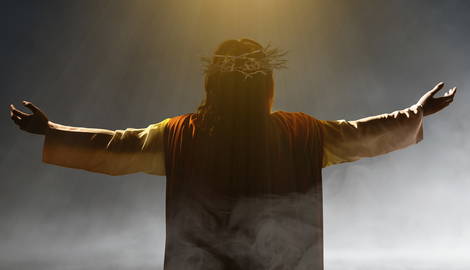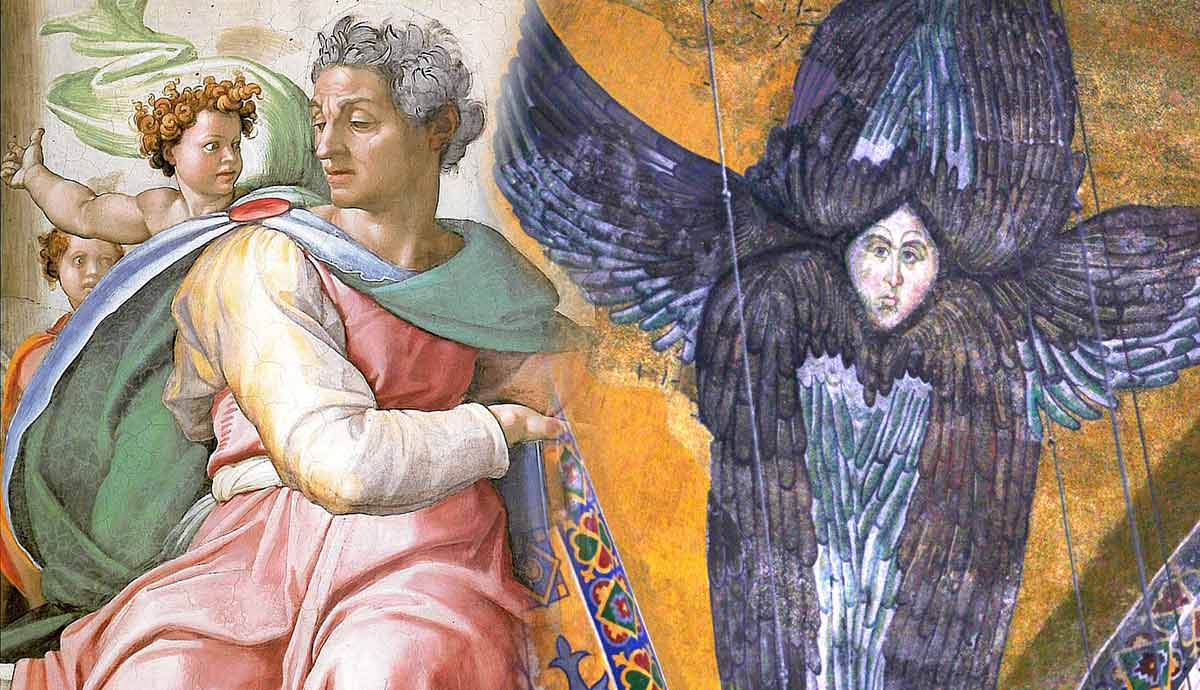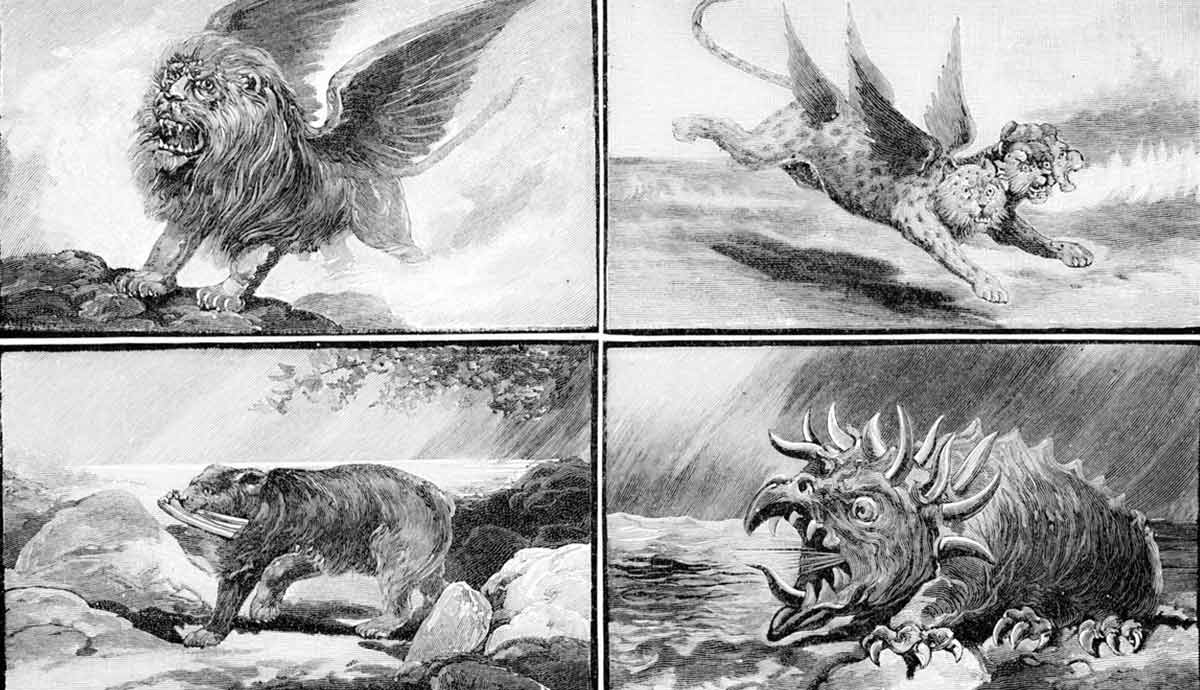
The Bible never describes how Jesus looked physically. However, several clues indirectly allude to some of his physical features. The lack of physical indicators may be due to the spiritual nature of his mission as the Messiah. Iconography shows how cultures at various times during the Christian era have depicted Jesus differently. The image most Christians have of what Jesus looked like seems to be a later development and goes against much of what scholars know about Semitic genetics and Jewish culture in the first century CE. So, what did Jesus look like?
Depictions of Jesus Throughout History

Few depictions of Jesus are found in the first four centuries of Christian history, likely due to the Jewish prohibition against making graven images on the one hand, and Roman persecution of the Christian faith on the other. Symbols dominated Christian iconography during this period, with the fish (ichthus), the chi rho symbol, and a good shepherd carrying a lamb featuring prominently.
Emperor Constantine allowed the free practice of the Christian faith in 313 CE by issuing the Edict of Milan, and Christianity finally became the state religion in 380 CE under Theodosius I. Christian iconography changed drastically during this time, and depictions of Jesus became more explicit and widespread.
Byzantine art depicted a young Jesus with long, dark, curly hair and a beard, with a serene expression, as Christ Pantocrator (“Ruler of All”). These depictions reflected the clothing and culture of the day rather than the realistic ethnic background of the Levant. The skin tone of Jesus’s depictions was as light as that of European saints. These works of art reflect symbolism and seem unconcerned with realism or ethnic accuracy.
In the Eastern tradition, the focus was on Christ’s divinity, and works portrayed him as a judge and king. A halo, symbolizing his holiness, was a common feature. As in Byzantine art, Eastern works depicted Jesus with long hair and a beard with no distinct ethnic traces that reflect his Semitic heritage. Jesus often wore rich, royal colors like purple and gold.
During the Middle Ages, depictions of Jesus diverged more than before in what they depicted, but much of the Byzantine style remained. The Early Medieval and Romanesque periods of art portray Jesus with a long beard, a symmetrical, stylized face, and hair parted in the middle, flowing down to his shoulders. Many of these works show Jesus with a piercing gaze, even on the cross as Christus Triumphator.

The Gothic era saw greater humanity and emotional expressiveness in artists’ depictions of Jesus. Though most works showed him bearded with long hair, some saw him beardless. He often had an elongated face, expressing pain, and pale skin.
During the Reformation, the focus was on scripture rather than iconography, and some reformers, like John Calvin, considered images of Jesus idolatrous. Depictions by Protestant artists of that time depicted Jesus with a beard, but sometimes without the mustache, as in Hans Holbein the Younger’s Noli me tangere. Again, Jesus has fair skin in this work.
With the search for the historical Jesus, depictions of Christ diverged even more. As Christianity became a global phenomenon, many cultures depicted Jesus with local traits in terms of facial features, hair, skin tone, and dress.
Central American culture sometimes depicts Jesus as black, as statues from Panama and Mexico reflect. Martin Luther King Jr. also supported the “Black Jesus” view, considering Christ’s struggles with the authorities of his day as a representation of the struggles of African Americans in the US. Manichaeism portrays Jesus with distinctly Eastern features.
The culture and context of the time influenced how artists depicted Jesus, and few present a reliable account of what Jesus might have looked like. In most cases, artists adapted Jesus to suit their audience, theology, or philosophy.
Genetics and Jewish Culture

The Jews placed great emphasis on lineage. It was culturally significant to Jews, and the lineage of Jesus traces back to Abraham and beyond. As such, he would have the typical genetic features of the Semitic people of the Levant. Semitic people tend to have a prominent nose, high cheekbones, brown eyes, and dark hair. Other hair and eye colors were rare and would likely stand out as unique features. If something about Jesus were atypical, one would expect commentators to mention it because it was uncommon.
Men in Israel at that time wore simple tunics and cloaks, often unbleached or dyed with plant-based colors. Jewish tradition dictated that Jews were not clean-shaven like the Romans or Greeks. They grew beards and hair on the sides of their heads (Leviticus 19:27). There was no rule prohibiting men from cutting their hair otherwise. Only Nazarites, like Samson, were not allowed to cut their hair as a sign of their holiness and dedication to God. Even in the New Testament, Paul speaks out against men wearing their hair long (1 Corinthians 11:14). If Jesus broke any of these conventions of Jewish society, his critics like the Pharisees and Sadducees would have highlighted it.
As with most of the Mediterranean region, people living there tend to have honey or olive-colored skin, significantly darker than those from the rest of Europe and much of Asia. Archaeological evidence from 1st-century Judea shows that people from that period were shorter than modern averages due to differences in diet and lifestyle. The average male in that era was between 5’1” and 5’5” tall.
So, the typical Jew from the 1st century CE had shortish, dark hair with longer sides, a beard, olive skin, brown eyes, a prominent nose, and was short compared to today’s standards.
What Did Jesus Look Like?

According to the biblical narrative, Jesus worked as a carpenter before his ministry started and traveled extensively once he did, walking from town to town across the land. This suggests that he was lean and fit, spending much time outdoors. It is reasonable to assume he had a slightly darker complexion than the average Jew due to his exposure to the sun. He most likely had the prominent nose the Semitic people are known for, dark hair, a beard, and brown eyes.
According to the Messianic prophecy of Isaiah 53, Jesus was not particularly handsome:
“For he grew up before him like a young plant, and like a root out of dry ground; he had no form or majesty that we should look at him, and no beauty that we should desire him. He was despised and rejected by men, a man of sorrows and acquainted with grief; and as one from whom men hide their faces he was despised, and we esteemed him not” (Isaiah 53:2-3).
Jesus’s appeal was not because of his outward appearance. Likewise, those who “despised and rejected” him did so not based on his physical characteristics but rather because of his interpretation of the Tanak, which was counter-cultural and exposed the hypocrisy of the religious elite.

According to Celsus, a 2nd-century philosopher who vehemently opposed Christianity, Jesus was “ugly and small,” a sentiment reflected by the ignorant, according to the Acts of Peter. This view may be due to interpreting Isaiah 53 as a comment on the physical appearance of Jesus.
The Church Father Irenaeus believed Jesus was weak and inglorious. Physically, that is unlikely, considering the abuse and torture Jesus endured during his capture, trial, and crucifixion. Should Irenaeus have had his demeanor or the way Jesus carried himself in mind, he would also have been wrong. Jesus was confident enough to oppose the religious elite of the time, and even to correct their erroneous views. He was bold enough to convince the disciples, some of whom had strong personalities, to follow him.

Finally, Jesus likely had kind eyes. Most scholars believe that how Jesus looked at Peter during his trial triggered the disciple’s reaction. The look was filled with love, compassion, and understanding, despite his betrayal. His kindness was likely why so many who met Jesus would engage with him and eventually follow him.
Revelation depicts the resurrected Christ as the son of man. It differs significantly from what we have seen thus far. Revelation 1:13-15 describes him as follows:
“The hairs of his head were white, like white wool, like snow. His eyes were like a flame of fire, his feet were like burnished bronze, refined in a furnace, and his voice was like the roar of many waters.”
Considering the nature of Revelation as apocalyptic prophecy, this depiction must not be regarded as literal but symbolic due to the character of the Book of Revelation.
Jesus was, as far as physical appearance is concerned, an average Jew with the typical Semitic features people from the Levant were known for. Olive-skinned, with dark hair and a beard, brown eyes, of lean build, fit, strong, and likely between 5 and 5 ½ feet tall. The woman at the well immediately identified Jesus as a Jew (John 4:9) which indicates that he had the typical physical features of a Jew of the first century CE.










